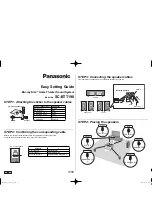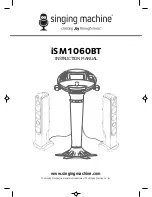
SAFETY
Always follow the manufacturers advice when using power tools; steps, ladders etc. and
wear suitable protective equipment (e.g. safety goggles) when drilling holes etc.
Before drilling holes in walls, check for hidden electricity cables and water pipes,
the use of a cable/pipe locater maybe advisable if in doubt.
Do not attempt to install or program this product while it is wet or raining.
TOOLS REQUIRED
●
No.2 Philips Screwdriver
●
3mm flat bladed screwdriver
●
Drill
●
6mm Masonry drill bit
2
The quoted range of the system is measured
in ideal conditions. Any barrier (e.g. walls/
ceilings aluminium reinforced UPVC windows
and metallic parts of house structures etc)
between the PIR and receiver will reduce
the effective radio range by an amount
dependant upon the construction of and
number of barriers between the PIR and
receiver.
In extreme cases where metal barriers are
involved then it is possible for the signal
to be blocked out completely.
Whilst the majority of installations are not
adversely affected, you may have to
experiment a little to discover the best
location for your PIR and Receiver Unit.
KIT CONTENTS
PIR Detector
Instruction Manual
Fixing pack containing:
●
2 slot-in PIR window masking curtains
●
2 fixing screws and plastic wall plugs
You will also need
●
One 9V PP3 (6LR61) Alkaline Battery
Device range
Installing the PIR Detector
Positioning the PIR
●
Place the detector within range of the Receiver, taking into consideration any reduction in
the 200m maximum range caused by any objects in between. Avoid mounting the unit on
or near large metal objects.





























